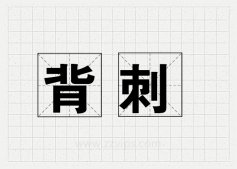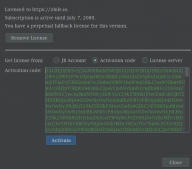spring针对各种缓存实现,抽象出了cachemanager接口,用户使用该接口处理缓存,而无需关心底层实现。并且也可以方便的更改缓存的具体实现,而不用修改业务代码。下面对于在springboot中使用缓存做一简单介绍:
1、添加依赖
|
1
2
3
4
|
<dependency> <groupid>org.springframework.boot</groupid> <artifactid>spring-boot-starter-cache</artifactid> </dependency> |
2、在配置类里开启缓存,如下图所示:

3、在需要使用缓存的方法上加上注解,如下:
|
1
2
3
4
5
6
7
8
|
@override //@cacheput 该注解会将方法的返回值缓存起来,其中缓存名字是 people,数据的key是person的id @cacheput(value = "people", key = "#person.id") public person save(person person) { person p = personrepository.save(person); system.out.println("为id、key为:"+p.getid()+"数据做了缓存"); return p; } |
|
1
2
3
4
5
6
7
|
@override //@cacheevict 该注解会删除people缓存中key为id 的数据 @cacheevict(value = "people", key = "#id") public void remove(long id) { system.out.println("删除了id、key为"+id+"的数据缓存"); //这里不做实际删除操作 } |
|
1
2
3
4
5
6
7
8
9
|
@override //@cacheable 该注解会在方法执行时,判断缓存people中key为#person.id 的缓存是否存在,如果存在,则直接返回缓存中的数据。如果不存在,则会查数据库,然后将返回结果缓存起来。 @cacheable(value = "people", key = "#person.id") public person findone(person person) { person p = personrepository.findone(person.getid()); system.out.println("为id、key为:"+p.getid()+"数据做了缓存"); return p; } |
以上几部就完成了缓存,但是现在的缓存是默认的基于内存的,没有实现持久化。下面以redis作为缓存的具体实现,如下:
4、添加依赖
|
1
2
3
4
|
<dependency> <groupid>org.springframework.boot</groupid> <artifactid>spring-boot-starter-redis</artifactid> </dependency> |
5、在配置文件里添加redis配置
|
1
2
|
redis.hostname=localhost redis.port=6379 |
6、在spring容器中配置redis
|
1
2
3
4
5
6
7
8
9
10
11
12
13
14
15
16
17
18
19
20
21
22
23
24
25
26
27
28
29
30
|
@configurationpublic class redisconfig extends cachingconfigurersupport{ private static final logger logger = loggerfactory.getlogger(redisconfig.class); @autowired private environment env; @bean public jedisconnectionfactory redisconnectionfactory() { jedisconnectionfactory redisconnectionfactory = new jedisconnectionfactory(); redisconnectionfactory.sethostname(env.getproperty("redis.hostname")); redisconnectionfactory.setport(integer.parseint(env.getproperty("redis.port"))); return redisconnectionfactory; } @bean public redistemplate<string, string> redistemplate(redisconnectionfactory cf) { redistemplate<string, string> redistemplate = new redistemplate<>(); redistemplate.setconnectionfactory(cf); return redistemplate; } @bean public cachemanager cachemanager(redistemplate<?, ?> redistemplate) { rediscachemanager cachemanager = new rediscachemanager(redistemplate); cachemanager.setdefaultexpiration(600); return cachemanager; } } |
ok,完成了,其他什么都不用改,是不是很方便?
另外,要缓存的类必须序列化。
以上就是本文的全部内容,希望对大家的学习有所帮助,也希望大家多多支持服务器之家。
原文链接:https://blog.csdn.net/luckyxl029/article/details/79420334





